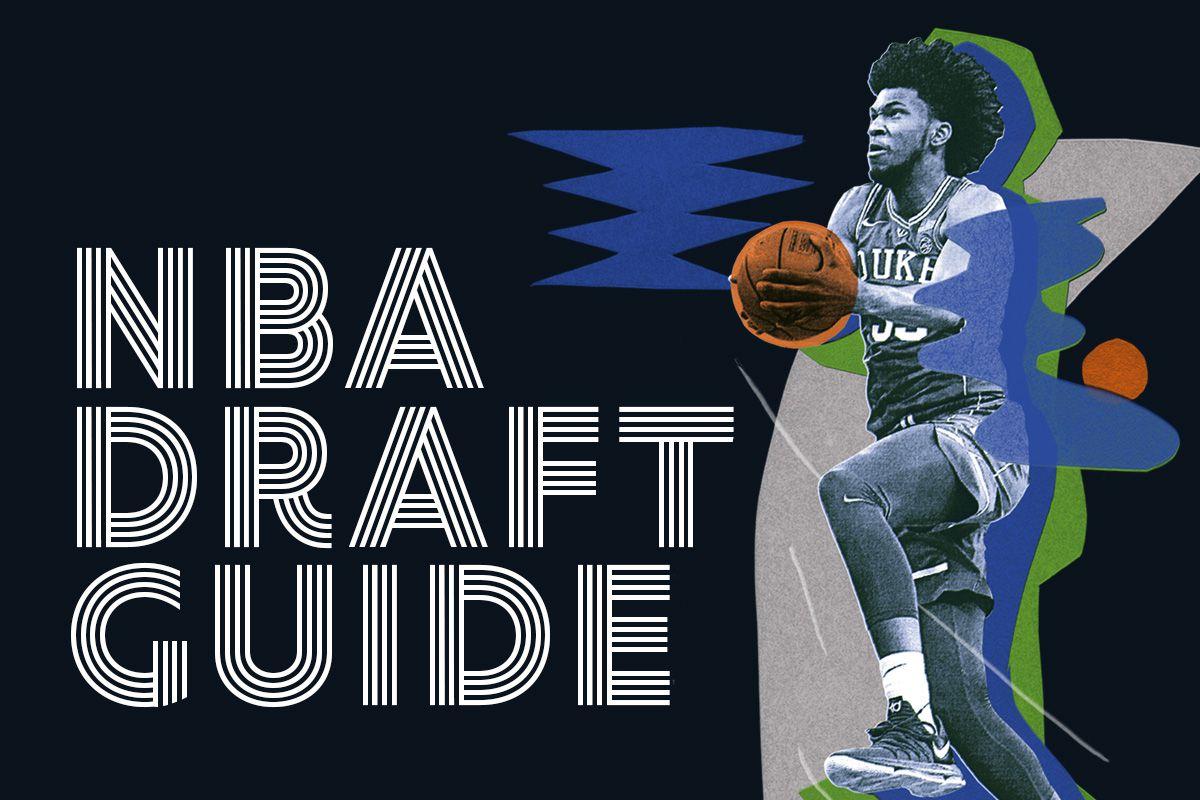Welcome to the third edition of The Ringer’s 2018 NBA Lottery Mock Draft, as selected by our three resident NBA draftniks: Kevin O’Connor, Jonathan Tjarks, and Danny Chau. Our 2018 NBA Draft Guide will launch in time for March Madness later this month, but in the meantime, here’s an updated look at our top prospects, and where they might be most coveted. If the draft order looks weird, it’s because the difference between the worst record in the league and the eighth-worst record is two games. Two games! Every win and loss in these final two months of the season can dramatically shift a team’s fortunes. We’re here to make sense of potential fits.
(Team draft order from nos. 1-8 were randomized, because, again, it’s a complete crapshoot right now in the standings. Picks 9-14 were determined by reverse standings. Team needs have been factored into each pick.)
1. Sacramento Kings: Luka Doncic
Guard/forward, Real Madrid/Slovenia (6-foot-8, 228 pounds, 19 years old)
Jonathan Tjarks: Doncic’s play has slipped in recent weeks, but his overall body of work and ability to step in right away and contribute at a high level would still be very appealing to Sacramento. Vlade Divac’s track record with European prospects is hit-or-miss: grabbing Bogdan Bogdanovic in a draft-day trade looks like a stroke of genius, while rolling the dice on Georgios Papagiannis blew up in his face. Nevertheless, if Vlade is still calling the shots in June (no sure thing for such an unstable franchise), the Kings seem like one of the more likely franchises to take Doncic at no. 1.
2. Orlando Magic: Deandre Ayton
Center, Arizona, freshman (7-foot-1, 250 pounds, 19 years old)
Kevin O’Connor: Ayton’s play this season has been worth a lot more than $100,000. The 7-foot-1, 250-pound big man put on a show against Oregon last weekend:
28 PTS, 18 REBS (11-for-15) and 4 BLK for Deandre Ayton vs an undersized Oregon team. Chin-ups on the rim and touch from the perimeter. Ayton now averaging 24.0 PTS and 13.4 REBS per 40 with a 66.0 true shooting %. https://t.co/4p8Rr4Dh3f pic.twitter.com/WXxVQfnPQP
— Mike Schmitz (@Mike_Schmitz) February 26, 2018
It hasn’t all been highlight plays, but Ayton is impressing in areas you wouldn’t consider strengths. His passing has been excellent, for instance. He does a good job of making outlet passes to jump-start transition offense, and he’s even better making the quintessential Draymond Green pass by throwing darts on the short roll to spot-up shooters. Ayton is no Nikola Jokic, but it’s a huge bonus when a big man can competently make plays for others. While it’s true that Ayton has flaws on defense, he has a chance to be a serious force. Don’t overthink it.
3. Memphis Grizzlies: Michael Porter Jr.
Forward, Missouri, freshman (6-foot-10, 215 pounds, 19 years old)
Danny Chau: Marc Gasol is not happy with the direction of the Grizzlies. Perhaps Memphis made the wrong call by not looking into offers for him at the deadline, but if the team is set on proceeding with its star Spaniard, it’ll need an NBA-ready prospect who also comes with a high ceiling. Porter fits the bill, even if he doesn’t wind up returning to play for Mizzou after back surgery late last year. There is plenty of tape that shows us what Porter is capable of when healthy: He is the rare 6-foot-10 pure wing who has the look (and instincts) of a star perimeter scorer. NBA executives are suggesting that Porter give it a go with Mizzou if he wants to bring his draft stock back up, but I’m not sure it matters. We’re still months away from the pre-draft combine. If Porter is healed and he performs well in drills, that could be all teams need to warm themselves back up. Porter would give the Grizzlies a potential star, and maybe more importantly, a tonic for the Chandler Parsons hangover the team and fan base is still suffering through.
4. Phoenix Suns: Jaren Jackson Jr.
Power forward/center, Michigan State, freshman (6-foot-11, 242 pounds, 18 years old)
Tjarks: The Suns desperately need 3-point shooting and defense around Devin Booker, so why not take a guy who fills both needs? Jackson has been one of the biggest risers in this year’s draft process, to the point where it’s no longer inconceivable to see him taken over more high-profile big men like Mohamed Bamba and Marvin Bagley III. Jackson has as much upside as either and a higher floor as a legitimate 3-and-D center. The Suns have used a lot of lottery picks on frontcourt players in recent years, but none has his combination of skills.
5. Dallas Mavericks: Mohamed Bamba
Center, Texas, freshman (6-foot-11, 225 pounds, 19 years old)
O’Connor: This is a conspiracy. Tjarks clearly selected Jackson with the fourth pick just so Bamba could fall to his hometown team. As an athletic lob threat and rim protector with a 9-foot-6 standing reach, Bamba is a perfect fit for Rick Carlisle’s offensive system. Dennis Smith repeatedly running high pick-and-rolls with Bamba would be pretty freaking invigorating. If Bamba’s perimeter shot translates, he could end up the best player in the draft.
6. Atlanta Hawks: Trae Young
Point guard, Oklahoma, freshman (6-foot-2, 180 pounds, 19 years old)
Chau: First: It’s absolutely wild that the Hawks, who I still contend have the worst roster in the NBA by a significant margin, could manage to pick as late as no. 6 (or, gasp, no. 8) in this draft. But it might not be all bad if they have their pick between talents like Young and Bagley this late. I have my concerns about pairing John Collins and Bagley together. Both players are excellent offensive-minded über-athletes, but neither player projects to be a dependable rim protector — overlapping skill sets are all the rage in today’s game, but not when it means doubling down on blind spots.
Young makes more sense, especially if the Hawks are looking to make sweeping forays into playing futuristic basketball. The Oklahoma guard’s air of invincibility may have vanished, but that doesn’t mean he doesn’t have all the offensive skills you could possibly ask for in a lead guard. If Young can affect the game through his limitless range and on-ball creativity at even a fraction of the level Steph Curry can, he will be a plus player. Dennis Schröder may still be under contract for several years at $15 million annually, but the Hawks are in no rush here as far as immediate impact goes. What they do need to find sooner rather than later is an identity. Young helps them attain one.
7. Chicago Bulls: Marvin Bagley III
Power forward/center, Duke, freshman (6-foot-11, 234 pounds, 18 years old)
Tjarks: Bagley seems like the most likely player from the top tier of the draft to slip. For all his production in college, the concerns about his positional fit at the next level have only gotten stronger over the course of the season. Can he play the 5? Is he comfortable enough on the perimeter to play the 4? It’s hard to imagine him falling below no. 7, but the same position issues would be presenet in Chicago, too: a frontcourt of Bagley and Lauri Markkanen would be dominant on offense, but would they be able to offer any rim protection?
8. Cleveland Cavaliers (via Nets): Mikal Bridges
Small forward, Villanova, junior (6-foot-6, 210 pounds, 21 years old)
O’Connor: Cavaliers general manager Koby Altman bolstered the roster at the deadline with Rodney Hood and Jordan Clarkson, but no team can ever have enough versatile swingmen. Bridges was Cleveland’s choice the last time we did a mock draft because the fit makes too much sense as a ready-made, multipositional defender who can also serve as a floor spacer. No matter what LeBron James decides to do this summer, Bridges can help the Cavaliers both now and later. However, Bridges does taste like a “draft for need” choice, rather than an upside pick. What the Cavaliers should really do is swing for the fences with this pick, no matter where it lands.
9. New York Knicks: Miles Bridges
Power forward, Michigan State, sophomore (6-foot-7, 225 pounds, 19 years old)
Chau: There are certain questions that Bridges just won’t be able to answer until he’s finally playing against NBA-level competition on a nightly basis. But the bully wing on the Wooden Award semifinalists list is still one of the top talents in the 2018 draft, even with his younger teammate stealing much of the pre-draft shine. He’s had his fair share of clutch moments this season, and I’m more confident in his shooting stroke translating to the NBA than ever before — ideally, he’s a 3/4 tweener in the mold of Tobias Harris or Danny Granger, with the lateral quickness and bulky frame that will allow him to defend some of the bigger physical anomalies in the league. Bridges’s block rate has plummeted in his second season after making a full-time transition from the 4 to the 3, but more likely than not, he’ll be tasked with playing power forward at the next level. Pairing his talents with a healthy Kristaps Porzingis sounds ideal. Knicks fans: Remember Derrick Williams on opening night in 2015? That could be Bridges for an entire career!
10. Philadelphia 76ers (via Lakers): Shai Gilgeous-Alexander
Guard, Kentucky, freshman (6-foot-6, 180 pounds, 19 years old)
Tjarks: Philly is in a weird position. There’s no point in drafting a frontcourt player with Joel Embiid, Ben Simmons, and Dario Saric already there, and taking Collin Sexton would mean giving up on Markelle Fultz a year after the Sixers took him at no. 1 overall. Their problem is there aren’t any obvious choices for 3-and-D wings after Mikal Bridges comes off the board. Gilgeous-Alexander doesn’t shoot a lot of 3s at Kentucky, but he’s a good free throw shooter with no obvious problems with his mechanics — which makes it easier to project him as a solid perimeter shooter down the line. The Sixers have all their stars. Now they just need to fill out the rest of their team. Gilgeous-Alexander fills a need: He can guard multiple positions on the perimeter and complement their stars on offense.
11. Los Angeles Clippers (via Pistons): Troy Brown Jr.
Shooting guard, Oregon, freshman (6-foot-7, 215 pounds, 18 years old)
Chau: It’s a strange purgatorial era for the Clippers, who could very well luck into two lottery picks come June but are not committed to dismantling their roster wholesale. With the team’s eyes darted toward the future and feet planted in the now, Brown is a prospect who can placate both sides of the divide. On offense, he is Doncic lite: a tall playmaker at the wing with an improvable perimeter stroke who can make difficult passes on the move and initiate a fast break by himself after grabbing a rebound.
On defense, he has the potential to be something special. For many prospects, the modern imperative of being able to switch screens across the positional spectrum is something we have to project. But in a short amount of time at Oregon, Brown has already shown the ability to ably defend essentially every possible body type in the college game, from point guard to big man. He is one of the youngest players in the draft, with one of the most mature games you’ll find in the early-to-mid first round — knowing exactly what you can expect from an 18-year-old prospect is its own kind of upside.
12. Charlotte Hornets: Wendell Carter Jr.
Power forward/center, Duke, freshman (6-foot-10, 259 pounds, 18 years old)
O’Connor: Bagley is clearly a better collegiate player than his teammate, Carter, but I do genuinely wonder which big man will end up a better pro. Carter flat-out knows how to ball. With a 7-foot-3 wingspan and a thick frame, he has a feathery touch and good mechanics from long range. He’s an ambidextrous finisher in the paint and a high-IQ defender. Carter lacks Bagley’s athleticism, but eclipses him in decision-making and feel. I’m not saying Carter will be better than Bagley. But Carter’s effectiveness makes it worth playing devil’s advocate and considering the possibility.
13. Utah Jazz: Kevin Knox
Power forward, Kentucky, freshman (6-foot-9, 215 pounds, 18 years old)
Tjarks: Knox has been Kentucky’s best player this season, which may not be saying as much as it would in most seasons. He may not be a star at the next level, but his skill set is a perfect fit for Utah. At 6-foot-9 and 215 pounds, Knox is a combo forward who can shoot 3s and create shots off the dribble, and he has the physical tools to guard on the post and the perimeter. He’s the small-ball 4 they have been looking to place next to Rudy Gobert for years.
14. Los Angeles Clippers: Robert Williams
Center, Texas A&M, sophomore (6-foot-10, 241 pounds, 20 years old)
O’Connor: With the uncertainty surrounding DeAndre Jordan’s upcoming free agency, another Texas A&M big man could serve as a solid replacement for the longtime Clipper. Like DJ, Robert Williams is an athletic lob threat who is entering the league with an unrefined skill set. The sophomore hasn’t made the strides that scouts would’ve liked to have seen, but with long arms and a strong frame, he may only need the right coaching to learn the discipline it takes to protect the rim.


